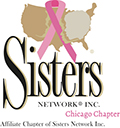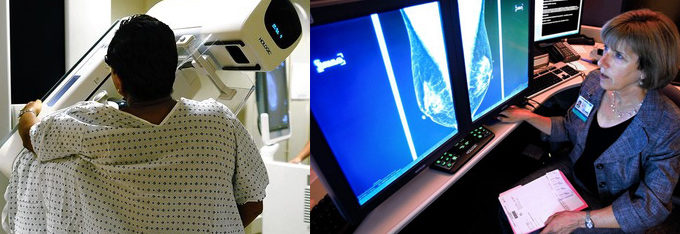“Some critics say no. HOWEVER the odds are in your favor if you do.”
It’s one of the leading causes of death among women. But how often should we check for it?
Breast-cancer screenings are one of the most hotly debated issues in health care. A large part of the medical establishment agrees with the long-held view that annual mammograms are a necessity and should be routine for women over 40. That way, any abnormalities can be spotted and dealt with as early as possible. But a growing chorus of critics argue the tests aren’t as useful as they’re made out to be. Increasingly effective treatments have made it less necessary to spot trouble early, they say. And, they argue, the screenings create too many false positives—and find too many “cancers” that will never matter to women, leading not only to unnecessary anxiety but also unnecessary treatment.
We look at two opposing viewpoints. First, making the case for annual mammograms is Marisa Weiss, president and founder of Breastcancer.org and director of breast health outreach and breast radiation oncology at Lankenau Medical Center, Wynnewood, Pa. Arguing against routine annual screenings is H. Gilbert Welch, a professor of medicine at the Dartmouth Institute for Health Policy and Clinical Practice and an author of “Overdiagnosed: Making People Sick in the Pursuit of Health.”
Breast Cancer is the most common cancer to affect women. Annual mammograms starting at age 40 are the best way to catch the disease early—and improve your odds of beating it. There were about 1.3 million new cases of breast cancer diagnosed globally in 2012, and its incidence is expected to double in the next 30 years. The good news is that major advances in surgery, radiation and chemo-targeted therapies have significantly raised the odds of surviving breast cancer. And the diagnostic procedures and treatments are less daunting than they used to be. But you have to find the cancers early in order to get the benefits of those new treatments, and that means getting tested carefully and regularly.
Critics argue that trials haven’t shown big benefits from early testing. But most published studies use old numbers, compiled when diagnostic methods and treatments were much less advanced. The studies also had significant biases that skewed the results. Even with some of these limitations, recently published studies show the survival benefit of testing. One Swedish trial compared a group of women who were invited to be screened regularly with a group who weren’t—and those invited had 31% fewer breast-cancer deaths over 29 years. The results would likely be even better using modern testing techniques in America, which has larger subgroups of women with different risk patterns, such as African-American and Jewish women. Also consider that only about half of American women are following the current guideline of annual mammography starting at age 40. Imagine what we could achieve if significantly more women got annual tests.
Some critics also point to the risks of false positives and overdiagnosis from screenings—whether it means undergoing unnecessary procedures or just facing psychological strain. But the false-positive rate can be greatly reduced by using other technologies to confirm test results. Beyond that, women in their prime of life with multiple dependents are likely to accept a higher false-positive rate in order to avoid missing a diagnosis. Isn’t the harm of not knowing about a problem far greater than the harm of a false positive? Plus, life-threatening cancers far outnumber the clinically insignificant cancers—and we still don’t know how to reliably distinguish between the real killers and the “pretenders.”
The bottom line is that critics think the medical community should make regular testing a matter of personal preference rather than pushing for it. That’s irresponsible. Many women at high risk for breast cancer don’t know they’re at high risk. If we send the message that the tests are optional, they won’t get screened. Beyond that, many women will skip the test because they’re uncomfortable with it—and all too often, it’s women at the highest risk who are most uncomfortable getting screened. It comes down to one simple fact. Most women want to minimize their maximum cancer risk. Annual mammography starting at age 40 will save the most lives and spare the most families from the devastation of this disease. Most women, if educated about the options and outcomes, will say definitely, “Please screen me!”
Article No: The Benefits are Small, But the Costs Can Be Great” by H. Gilbert Welch. Mammograms are a choice, not a public-health imperative. For decades, we’ve heard that “screening saves lives” without any accompanying message that there might be reasons not to be screened. The truth is, screening is a close call—a delicate balance of benefits and harms that different women may feel differently about. Let’s start with the benefits. A close look at the numbers shows the benefits are simply not as a big as they’re made out to be. Among 50-year-old women—a group for whom we have the firmest data—the risk of dying from breast cancer in the next 10 years is about four per 1,000. Annual mammograms might lower that number to three per 1,000.
In other words, 1,000 women have to be screened for a decade to help one avoid a breast-cancer death. And that’s using a very optimistic assumption—that screening can reduce breast-cancer mortality by 25%. An increasing number of researchers, myself included, think the reduction is closer to 10%. That would mean saving just 0.4 women per 1,000 screened. Let’s put it this way: If we screen 1,000 50-year-old women for 10 years, somewhere between zero and one will benefit. Because the risk of breast-cancer death rises with age, the number will be a little higher for 60-year-olds and a little lower for 40-year-olds. Some critics think the numbers I’ve cited are out of date and don’t reflect advances in treatment. I agree treatments have gotten better; that’s why I estimate the benefits of screening to be so small. The more effectively we can treat a disease, the less important it is to find it early. We don’t screen for pneumonia, for instance, because we can treat most pneumonia.
Those are the benefits. But when only one in 1,000 women is helped, it’s reasonable to ask what happens to the other 999. In the U.S., somewhere between 200 and 500 will have a false alarm during 10 years of screening. Seventy to 190 will undergo a biopsy to prove it was a false alarm, and some will never be completely reassured. The less familiar harm of screening is overdiagnosis—when a woman is told she has cancer, yet her cancer is not destined to cause symptoms or death. Among 1,000 women screened for 10 years, between four and 10 will be treated for cancer that was never going to bother them. That means screening leads women to undergo unnecessary surgery, chemotherapy and/or radiation. Indeed, one reason breast cancer is so “common” is that we look so hard for it—and end up erring along the way. Overall, 75% to 90% of cancers caught by screening are either overdiagnosed or would have been successfully treated if spotted later. Avoiding a breast-cancer death is an important benefit—clearly more consequential than false alarms or overdiagnosis and overtreatment. But the harms are much more likely than the benefits.
The question of “What to do?” has no single right answer. It’s a value judgment. There is a wrong answer, however. Overstate the benefits, play down the harms and persuade, guilt or coerce women into screening. Too often that’s what happens now. To be sure, I’m in total agreement with those who argue that the women who stand to benefit the most from early detection are the women at the highest risk for dying from breast cancer. We should address their needs more elegantly than telling the other 95% of the population they must be screened. For them, it’s a choice. Those who like mammography and want to do everything possible to avoid a breast-cancer death should feel good about doing it. Those who don’t like the procedure or the prospect of being turned into a patient unnecessarily should feel equally good about not doing it.
SOURCE: US Edition, Wall Street Journal, updated Feb 18, 2013.

